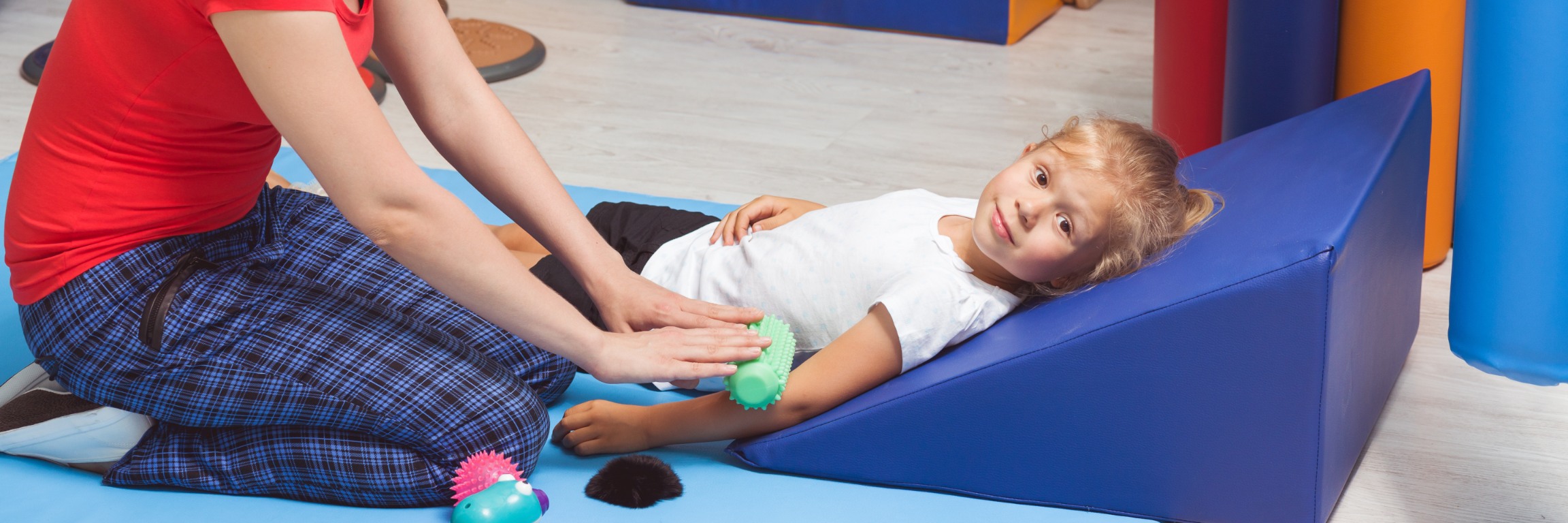Sensory Processing Issues in the Classroom 101
April 29, 2022

Imagine sitting outside in a quiet area when suddenly a truck drives by with its stereo blasting, then a dog runs up to you and licks your face, and then your friend comes over and punches you in the arm to say hello. This would be an annoyance for most, but it would be incredibly overwhelming for those with sensory processing issues (when someone has difficulties organizing and responding to information that comes in through the senses).
It is estimated that 5-16% of school-aged children have sensory processing issues, and early studies estimate that an additional 20% of the population has sensory processing sensitivities. Having sensory processing disorder (SPD) is not currently recognized as a diagnosis on its own but is seen as a symptom of other conditions. For example, children who have autism or attention deficit hyperactivity disorder (ADHD) often have sensory processing issues.
Sensory Overload in the Classroom
As parents and teachers, we want children to have positive experiences in school to set them up to be successful in their personal lives and prospective careers. When children have sensory processing issues, educators need to find strategies so they do not get left behind.
Sensory overload happens when one of our senses is triggered. Each person may be overwhelmed by different or multiple triggers. Examples include sights, sounds, touch, or smells. Loud noises or music is a common trigger, so children with sensory processing issues often need a quiet space to focus and quiet time to reset after being exposed to a noisy event.

VARK: The Four Types of Learning
In recent years, educators have been modifying how they teach their students to accommodate every learner and their learning style. Most educators use the VARK model, which describes the four main types of learners: visual, auditory, reading and writing, and kinesthetic.
- Visual: Visual learners prefer to use images, graphics, colours, and maps to communicate ideas and thoughts. Visual learners need to see information to learn it.
- Auditory: This learner absorbs information by hearing and listening. These learners store information by how it sounds and have an easier time understanding spoken instructions than written ones.
- Reading and Writing: These learners comprehend what they read in notes, handouts, and textbooks, and typically enjoy writing.
- Kinesthetic: This learning style occurs when students do activities rather than listen to a lecture or watch a demonstration.
Most people learn using two-three learning styles. But for those with sensory processing issues, one type is usually significantly more dominant, which means they are less effective at accessing other learning styles, especially when under stress. To determine your students’ learning styles, watch them. With simple observation, it becomes apparent which style a learner gravitates to.
As soon as a child with sensory issues enters your classroom, you should assess them for learning style and then adapt your teaching method to match the student’s strengths. This will give the student a much greater chance of success both academically and behaviourally.

Emotional Dysregulation
Sensory overload can also result in emotional dysregulation, an emotional response to something unpleasant or uncomfortable that does not fall within society’s accepted range of a normal reaction. All of us can become dysregulated when triggered, but those with sensory processing issues are likely to experience it more intensely and for an extended period.
Educators need to get to know each student to better understand when and why dysregulation happens, as the reasoning is different for each child. Only when these triggers are understood can a teacher indeed be successful at helping a student do their best work in the classroom and beyond.
Parents and Teachers Working Together
These are a few of the ways to help those with sensory processing issues:
- Talk in a calm and quiet voice.
- Direct your student’s attention to a sensory-free area that is clutter-free and quiet.
- Limit your gestures and movement to only those that are necessary.
- Approach your student from the front.
- Minimize the amount of cologne or perfume you wear, or better yet, don’t wear any.
- Get your student’s approval before you bring in anything that might be overly stimulating to their senses.
Stimming as a Response to Being Overwhelmed
When a child starts showing signs that they are about to begin stimming, it should be addressed immediately:
- Eliminate or reduce the trigger, lower stress, and provide a quiet and calm environment.
- Encourage good behaviours and self-control. Do not punish the stimming behaviour.
- Try to teach an alternate (and more acceptable) behaviour.

Use Design to Create a Sensory-Friendly Zone

- Have several types of furniture, such as rocking chairs, wobble stools, and stand-up tables, which gives children the opportunity to bounce or fidget if that is what is needed.
- Build out a cool-down space in your classroom with comfortable seating. Use a corner and an existing bookshelf to provide walls to enclose the space.
- Let as much natural light in as possible. Artificial light can cause stimulation overload for those with sensory issues.
- Keep a set of headphones in your classroom for instances when a student needs to zone out or re-centre themselves. Furthermore, listening to music helps improve focus and attention to detail for many students.
- Variety—the Children’s Charity offers sensory backpacks filled with sensory resources for self-regulation, tactile input, attention focusing tools, and body awareness support items. Contact Variety to inquire about getting sensory support for your students.
- Consider using lava lamps to help visually calm down a child in the middle of sensory overload.
Flexible Classroom Settings for Flexible Learning
If a child has a sensory processing issue, they may need to be accommodated when teaching a lesson. Maybe the child’s focus and mood are affected by colours and textures. Perhaps they learn best with headphones on, seated away from their classmates. If this is the case, they might need to sit in a separate classroom area while the other students are seated at their desks.
Students learn in different ways, and that diversity is a beautiful thing. If you have any students with sensory issues, it is critical that, as an educator, you provide space where those students can excel, unwind, and recharge.
If possible, have standalone pieces of furniture in your classroom that can be moved at a moment’s notice. Multi-functional furniture will also help, as those pieces can be arranged differently depending on the lesson’s needs.

Help Ease Sensory Overload
Many children have sensory processing issues, and it is our job as parents and educators to find ways to support them best. When a child is feeling overwhelmed by their senses, they may act out. In these moments, act swiftly and do what you can to help ease their anxieties and feelings of discomfort because they may not be able to do it themselves.
To learn more on this topic, see the following reference materials we used in creating this article:
Breakthrough Study Reveals Biological Basis for Sensory Processing Disorders in Kids: https://www.ucsf.edu/news/2013/07/107316/breakthrough-study-reveals-biological-basis-sensory-processing-disorders-kids
Learning Styles & Autism: https://www.autism.org/learning-styles-autism/
Learning Styles: https://test.ccri.edu/success/pdf/sc_LearningStyles-FINAL.pdf
Overview of VARK Learning Styles: https://www.verywellmind.com/vark-learning-styles-2795156
The VARK Modalities: https://vark-learn.com/introduction-to-vark/the-vark-modalities/

